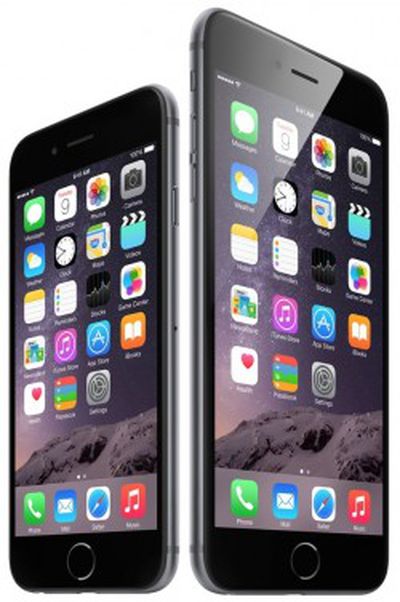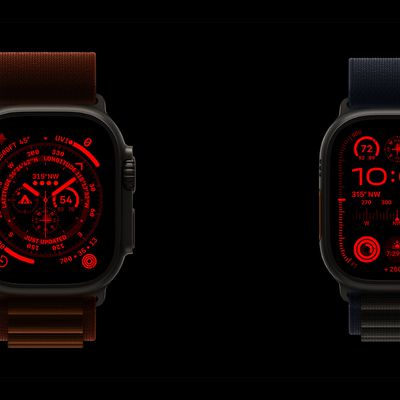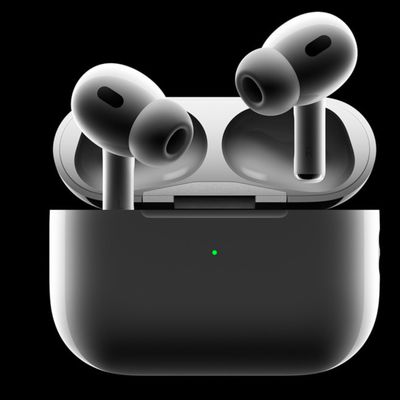iPhone 6 Component Costs Estimated to Begin at $200, Samsung Supplying Some A8 Chips
 As it routinely does for new devices, IHS iSuppli has taken apart the iPhone 6 and iPhone 6 Plus in an effort to estimate Apple's costs for the components included in the new devices, sharing the results with Re/code. According to IHS iSuppli's teardowns, parts and labor costs for the iPhone 6 are estimated to begin at $200 for the 16 GB iPhone 6 model, giving Apple a roughly 69 percent gross profit margin on the devices.
As it routinely does for new devices, IHS iSuppli has taken apart the iPhone 6 and iPhone 6 Plus in an effort to estimate Apple's costs for the components included in the new devices, sharing the results with Re/code. According to IHS iSuppli's teardowns, parts and labor costs for the iPhone 6 are estimated to begin at $200 for the 16 GB iPhone 6 model, giving Apple a roughly 69 percent gross profit margin on the devices.
That number of course does not take into account an array of other costs, from research and development to software to marketing and distribution, but it does offer an interesting glimpse at what goes into an iPhone.
The margins are in line with more recent iPhone models but higher than the earliest ones. The gross margin on the iPhone 5, released in 2012, and the iPhone 5s, released last year, were about 69 percent, teardown studies at the time of their release showed. On the lower-priced iPhone 5c, also released in 2012, the gross margin was closer to 68 percent. By comparison, the gross margin on the very first iPhone, released in 2007, was closer to 55 percent.
Apple does earn slightly higher margins on higher-capacity iPhone 6 models, as the 128 GB of storage is estimated to cost $47 more than the base 16 GB storage while the device retails for $200 more.
The iPhone 6 Plus is also a higher-margin item for Apple, with IHS iSuppli estimating the device costs just $16 more to produce than the corresponding iPhone 6 models, with roughly half of that difference coming from the display and the remainder presumably related to the rear camera module with optical image stabilization, a larger battery, and other minor differences.
Another interesting observation from IHS iSuppli is that Samsung does indeed remain involved in production of the main A-series processor for the iPhone. Early teardowns had shown the iPhone 6 and 6 Plus using A8 chips manufactured by TSMC for the first time, but IHS iSuppli says TSMC is providing 60 percent of A8 chips while Samsung is handling the remaining 40 percent.
Popular Stories
The long wait for an Apple Watch Ultra 3 appears to be nearly over, and it is rumored to feature both satellite connectivity and 5G support.
Apple Watch Ultra's existing Night Mode
In his latest Power On newsletter, Bloomberg's Mark Gurman said that the Apple Watch Ultra 3 is on track to launch this year with "significant" new features, including satellite connectivity, which would let you...
Apple's next-generation iPhone 17 Pro and iPhone 17 Pro Max are just over two months away, and there are plenty of rumors about the devices.
Below, we recap key changes rumored for the iPhone 17 Pro models.
Latest Rumors
These rumors surfaced in June and July:Apple logo repositioned: Apple's logo may have a lower position on the back of the iPhone 17 Pro models, compared to previous...
The iPhone 17 Pro Max will feature the biggest ever battery in an iPhone, according to the Weibo leaker known as "Instant Digital."
In a new post, the leaker listed the battery capacities of the iPhone 11 Pro Max through to the iPhone 16 Pro Max, and added that the iPhone 17 Pro Max will feature a battery capacity of 5,000mAh:
iPhone 11 Pro Max: 3,969mAh
iPhone 12 Pro Max: 3,687mAh...
Apple's position as the dominant force in the global true wireless stereo (TWS) earbud market is expected to continue through 2025, according to Counterpoint Research.
The forecast outlines a 3% year-over-year increase in global TWS unit shipments for 2025, signaling a transition from rapid growth to a more mature phase for the category. While Apple is set to remain the leading brand by...
AppleInsider's Marko Zivkovic today shared a list of alleged identifiers for future Mac models, which should roll out over the next year or so.
The report does not reveal anything too surprising, but it does serve as further evidence that Apple is seemingly working on new models of every Mac, including the MacBook Air, MacBook Pro, iMac, Mac mini, Mac Studio, and Mac Pro.
Apple is...
The upcoming iPhone 17 Pro and iPhone 17 Pro Max are rumored to have a slightly different MagSafe magnet layout compared to existing iPhone models, and a leaked photo has offered a closer look at the supposed new design.
The leaker Majin Bu today shared a photo of alleged MagSafe magnet arrays for third-party iPhone 17 Pro cases. On existing iPhone models with MagSafe, the magnets form a...
 As it routinely does for new devices, IHS iSuppli has taken apart the iPhone 6 and iPhone 6 Plus in an effort to estimate Apple's costs for the components included in the new devices, sharing the results with Re/code. According to IHS iSuppli's teardowns, parts and labor costs for the iPhone 6 are estimated to begin at $200 for the 16 GB iPhone 6 model, giving Apple a roughly 69 percent gross profit margin on the devices.
As it routinely does for new devices, IHS iSuppli has taken apart the iPhone 6 and iPhone 6 Plus in an effort to estimate Apple's costs for the components included in the new devices, sharing the results with Re/code. According to IHS iSuppli's teardowns, parts and labor costs for the iPhone 6 are estimated to begin at $200 for the 16 GB iPhone 6 model, giving Apple a roughly 69 percent gross profit margin on the devices.
















